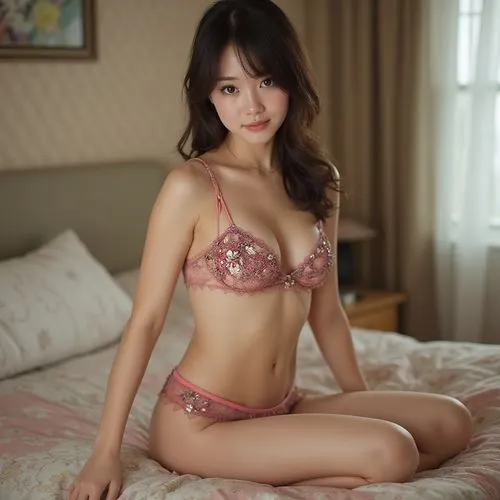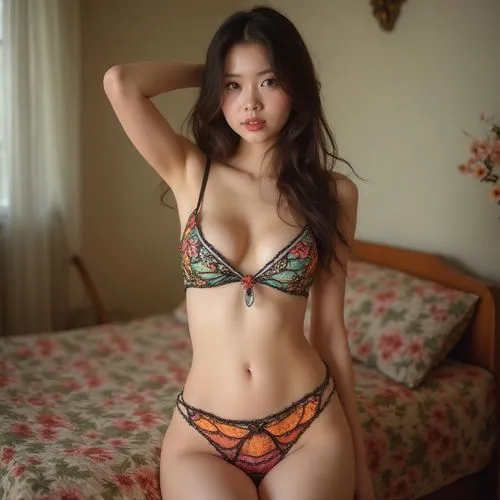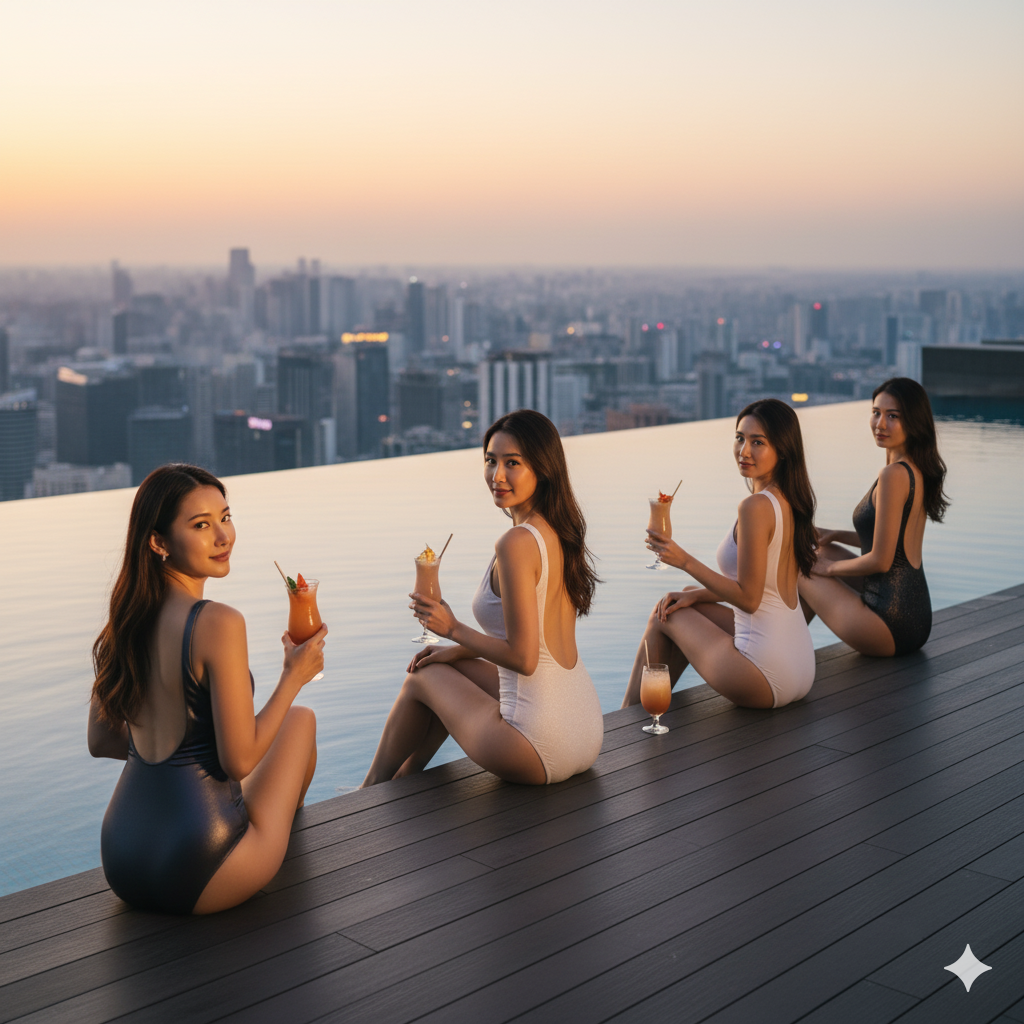In modern Japanese nightlife, a Pinsaro (Pink Salon) is a semi-open lounge or booth venue where short, time-boxed sessions include drinks, conversation, and standardized intimate contact—primarily oral sex (フェラチオ / oral sex) and manual stimulation. Spaces are near train stations, dimly lit, and designed for quick turnover. Full intercourse is not part of the formal system. For visitors, the key is to understand the format, pricing, rules, and etiquette so you can participate safely and respectfully.
How Japanese Erotic Venues Are Structured (Context)
In modern Japanese nightlife, erotic entertainment is organized around specific venue types.
A Pinsaro (Pink Salon) is typically a small, softly lit lounge with booth seating, offering short, one-on-one sessions involving drinks, intimate proximity, and oral contact as a standardized, time-limited performance.
A Soapland provides private rooms where bathing rituals and body-to-body interaction form a structured and ritualized format of intimacy. An Image Club (Imekura) emphasizes costumes and roleplay. A Sexy Cabaret (Sekukyaba) adds close seating and light stimulation in a social club space. Delivery Health and Hotel Health operate in external spaces (e.g., business hotels) with contact services arranged off-site.
Usage splits between quick daytime sessions and longer night visits. Since the late 2010s, multilingual signage and inbound-friendly operations have increased in big cities.
Related guides on SoapEmpire: Tokyo Red Light District Guide · Pink Salon 101 · Soapland Basics
1. What is a Pinsaro?

Spatial Design & Atmosphere
Shops cluster in nightlife buildings near busy stations. Interiors are dim with strong background music; seating is either bench-style or flat-mat booths. See examples like Shinjuku’s new venue “Betty” with posted hours 9:00–24:00 (Store Official Website) and Kichijoji’s “Kirari” near the station (Store Official Website).
What Acts Are Standardized?
The formal core is oral stimulation and hand stimulation delivered as a time-boxed performance. Many shops allow light touching; rules differ per venue and performer. Intercourse is excluded from the system.
Why Semi-Open Booths?
Semi-open partitions are common because enclosed private rooms can trigger stricter regulatory categories. The visible layout, music, and staffing together stage a controlled performance rather than a private tryst.
Further reading and event-posted pricing examples from Kabukicho cosplay-style shop “Lucifer” (Store Official Website).
2. Where to Go & How to Access?

Station-Area Ecology
Districts grow around rail hubs. Kabukicho concentrates mixed entertainment floors; Kichijoji has compact, walkable lanes. Example: “SGR” lists address in Kichijoji Honcho, ~2 minutes from the station (Store Official Website).
How to Read a Store Page
Look for SYSTEM (料金・時間), ACCESS (map), SCHEDULE, and whether they accept reservations or walk-ins. New openings like “Betty” in Kabukicho mark hours and phone contact (Store Official Website).
Sample Venue Snapshot
| Venue | Area | Access | Example Hours / Notes | Indicative Pricing (if posted) |
|---|---|---|---|---|
| Betty | Shinjuku (Kabukicho) | Near Kabukicho (multi-tenant bldg.) | 9:00–24:00 posted; phone listed Store Official Website |
See site |
| Kirari | Kichijoji | Approx. 3-minute walk from station (site) | Large roster; recruitment note on site Store Official Website |
See site |
| Lucifer (Cosplay Collection) | Shinjuku (Kabukicho) | Central Kabukicho | Frequent discount events posted Store Official Website |
Event examples: 20 min ¥3,500–¥5,000; 30–45 min ¥5,000–¥7,500 (per event page) |
| SGR (Kichijoji) | Kichijoji | Honcho 1-17-9 B1; ~2 minutes walk | Address & phone listed Store Official Website |
See site |
3. Prices, Time Blocks & How to Book

Time & Price Anatomy
Events frequently post short “20-minute” and “30-minute” offers; for instance, Kabukicho’s Lucifer shows 20-min and 30-min tiers and rotation upgrades on its events page (Store Official Website). Other shops display hours and contact but keep exact price tables inside the venue or phone-only (e.g., “Betty” hours 9:00–24:00: Store Official Website).
Booking Options
Walk-in is common. Some stores allow phone reservations for a time window or for a specific performer (指名). Check each site’s “SYSTEM” or top page. Example: venue pages typically list phone numbers and map blocks (see SGR contact details: Store Official Website).
Designation, Rotation & Extras
Designation (指名)—choosing a specific performer—usually has a fee. Rotation (花びら回転) means multiple performers serve you sequentially within one paid block; event pages (e.g., Lucifer) show 2- or 3-rotation pricing. Drinks beyond the basic soft drink may incur charges.
4. Service Format, Rotation & Etiquette

Step-by-Step Flow
Reception confirms time and options; payment is often up front. You are shown to a booth (bench or flat). Music is loud to protect privacy. The performer provides oral and/or manual stimulation as per venue norms and her comfort. Toward the end, the floor staff may check time; extension is sometimes possible.
Do’s & Don’ts (Etiquette)
- Ask the floor staff what is allowed; each venue has a rule board.
- Keep hands gentle; do not push for acts marked “NG.”
- No photos/recording. Phones away.
- Hygiene matters: be clean, trim nails, and avoid visits if you have sores.
- Tip culture is limited; follow posted fees rather than bargaining.
Understanding Rotation
Rotation creates a rhythmic, ritualized experience: desire is segmented across performers and time. As seen in posted event menus (Kabukicho Lucifer), 2- or 3-rotation courses are clearly priced and limited to specific time bands (Store Official Website).
5. Legal, Spatial Rules & Health Norms

Why “Semi-Open” Matters
Many buildings enforce rules about partitions and sightlines. Shops avoid fully enclosed rooms and keep music up to frame sessions as staged entertainment, not private encounters.
Consent & Health
Consent is an operational rule: performers set boundaries; customers follow. Mouth rinsing, wipes, and other hygiene measures are common backstage norms. If a venue offers condoms for oral, follow instructions; you may bring your own.
Picking Reputable Venues
Favor shops with clearly posted hours, maps, and a staffed front desk. Examples of sites that publish basic operational info include “Betty” (hours, phone: Store Official Website) and “SGR” (address & station walk time: Store Official Website).
6. Sample Night Plan & Useful Phrases

Model Itinerary (Kabukicho)
- 18:30 — Early dinner near the station.
- 19:30 — Walk to a Pinsaro (check site for hours; e.g., Betty posts 9:00–24:00: Store Official Website).
- 19:40 — Reception, choose free/指定, pay upfront.
- 19:45 — 30-minute session (consider rotation courses shown on event menus like Lucifer’s: Store Official Website).
- 20:20 — Exit; optional extension if offered.
Useful English → Japanese Phrases
- “Do you accept walk-ins?” → 「飛び込みでも大丈夫ですか?」
- “How much is 30 minutes?” → 「30分はいくらですか?」
- “Can I designate a staff member?” → 「指名はできますか?」
- “What is allowed?” → 「できること・NGを教えてください。」
- “Can I extend time?” → 「延長はできますか?」
Budgeting & Payment
Bring cash. Add a buffer for designation fees or event upgrades (e.g., rotation). For cosplay-style shops, prices sometimes vary by time slot; check posted event pages (Store Official Website).
Summary and Next Steps

To go deeper, explore SoapEmpire’s area primers: Tokyo Red Light District Guide, Pink Salon 101, Soapland Basics.
Recommended: Use SoapEmpire to Navigate Pinsaro Safely
For many visitors, Japan’s nightlife map looks exciting but opaque. You may know the name—Pinsaro (Pink Salon)—yet still wonder: which venues are legitimate, what exactly is included, how do rotation courses work, and how do I communicate boundaries without fluent Japanese? Add in the urban density of Shinjuku or Kichijoji, and even confident travelers can feel lost.
SoapEmpire solves these problems with a clear, English-first portal to research, compare, and book. The platform focuses on the real structure of the experience—time blocks, what is allowed (e.g., oral sex only, no intercourse), seat types (bench vs. flat), rotation options, and access from major stations. Each listing summarizes hours, maps, price cues, and service style in plain language, so you know what you are paying for before you step inside.
What sets SoapEmpire apart is a blend of coverage (Tokyo, Osaka, Nagoya, Fukuoka and more), quality control (screened venues and ongoing updates), and a 24-hour booking support service at a simple flat fee. Instead of cold-calling a venue or decoding jargon at reception, you send SoapEmpire the shop name, preferred time, and an alias; they arrange the details, confirm the system, and share directions. It’s efficient and discreet.
For travelers and residents alike, that means lower friction, fewer misunderstandings, and more time enjoying the actual experience. You gain clarity on the standardized format of Pinsaro—short sessions, semi-open booths, rotation choices—while avoiding venues that don’t match your expectations. If you’re comparing alternatives (e.g., Image Clubs or Soaplands), SoapEmpire’s guides explain how each format differs in space, performance, and cost so you can decide confidently.
In short, if you want the cultural experience without the confusion, use SoapEmpire to plan, choose, and book with calm. For reservations or inquiries, please contact us via the inquiry form.
If you’re interested in visiting any of these places, SoapEmpire offers a 24-hour booking support service for only $10.
Just send the store name, preferred time, and your name (nickname is fine) to: artistatakuma@icloud.com.
We’ll take care of your reservation quickly and smoothly.
FAQ
Is full intercourse included at a Pinsaro?
No. Standardized Pinsaro formats focus on oral sex and manual stimulation. Intercourse is not part of the formal system; do not request it.
How much should I budget for a 30-minute session?
In city centers, many visitors budget ¥5,000–¥8,000 for 30 minutes, plus optional designation or event upgrades. Exact prices depend on the venue; some publish event menus (e.g., Kabukicho cosplay shop pages).
Do venues accept reservations?
Many are walk-in friendly, but some accept phone bookings for a time window or a designated performer. Check the venue’s site for hours and contact, or use SoapEmpire’s booking support.
Which areas are easiest for first-timers?
Districts near large stations like Shinjuku (Kabukicho) and Kichijoji are straightforward due to dense venue clusters and clearer signage. Always confirm the system on the official site.


